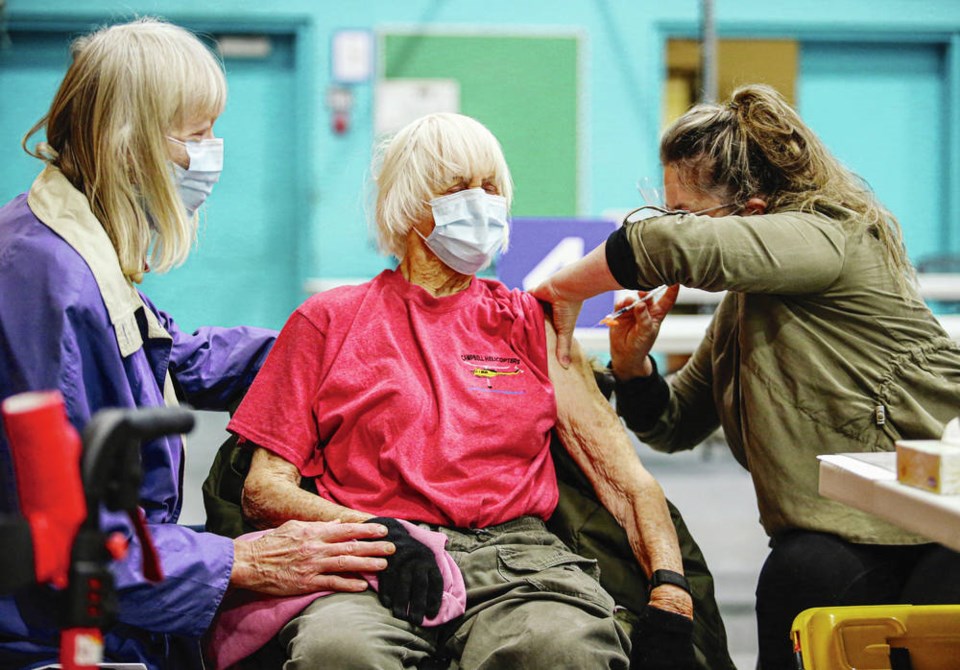Not enough people will obtain immunity to COVID-19 under B.C.’s current vaccination program to allow life to return to normal by fall, according to a new report by two Simon Fraser University professors.
A set of simulations run by mathematicians Paul Tupper and Caroline Colijn show that B.C. should be able to protect about 51 per cent of the population through its current vaccination program, which aims to provide every eligible adult with their second dose of vaccine by September.
That is about nine percentage points short of the 60 per cent of the population needed to achieve herd immunity.
Tupper said it was his “fervent hope” that life would return to normal after B.C.’s vaccination rollout was complete, but after crunching the numbers and looking at research from the U.K., he realized that was “not going to happen.”
That is because about 80 per cent of B.C.’s population is adult and only 80 per cent of adults are expected to get vaccinated. In their simulations, Tupper and Colijn assumed the vaccines would be 80 per cent effective at preventing infection. As a result, they found that vaccinating only adults who choose to be vaccinated would not achieve herd immunity.
“I think this report is a warning to the public that we can’t expect to go back to normal in September,” said Tupper. “It also provides some advice [for health officials] on the need to vaccinate children.”
Tupper said the public shouldn’t be surprised when discussions about vaccinating kids come up in B.C. as it is likely the best option for reaching the end of the pandemic.
While the Moderna and AstraZeneca vaccines are approved for those 18 and older and the Pfizer vaccine is approved for those 16 and older, trials for younger ages are still underway. Health Canada is reviewing an application from Pfizer to expand vaccine use to kids 12 and up.
“We need a higher fraction of the population to have immunity in order to return to life as normal,” Tupper and Colijn wrote in their report. “We can reach that fraction either through vaccination or infection.”
The report lays out three options, including changing the current vaccination program to include kids and increase acceptance of the vaccines among those who have chosen not to get it.
Another option to close the nine-point gap is to accept that an additional 10 to 20 per cent of the population will get COVID‑19 after the current vaccination program is complete. Tupper and Colijn warn that this option comes at a “substantial risk” to the infected individuals, many of whom would be children.
“That’s nearly 470,000 people in B.C., or approximately three times the number of infections we have seen to date,” they wrote.
The third option, which also comes with a downside, is to continue to manage the spread of the virus through social distancing.
While the report concludes that the first option — changing the current vaccination program — will likely lead to the best outcome, some combination of the three will be necessary.
“The more immunity we have, the less we have to do of these other things,” Tupper said. “We need to start thinking about the things we’re going to need to do forever.”
The math professor said the public may be willing to accept the need for continued contract tracing for cases of COVID-19, but “never having a child’s birthday party again” is out of the question.
Tupper also warned that other factors could come into play in determining B.C.’s “new normal.”
“If we vaccinate children and we keep vaccine hesitancy low and we don’t see a new variant, normal is possible,” he said. But a more transmissible virus caused by variants could require a level of protection greater than 60 per cent to achieve herd immunity.



